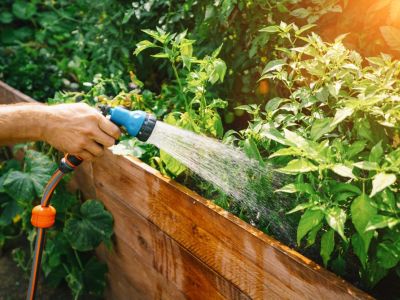Vegetables That Grow in Heat and How to Help Them Thrive
Choosing vegetables that grow in high heat will go a long way toward saving your sanity. Check your local garden stores and southern seed specialty catalogs for the cultivars and varieties that do well in your area. You can also check with your local university extension agents in the U.S., who know what vegetables grow well in heat. Also, if you prefer transplants, local nurseries will offer hot weather vegetable plants. Not all vegetables grow well in all climates. For example, the popular, heat-loving tomato does not do well in Florida’s summer temperatures. Instead, Florida gardeners can grow tomatillos or cherry tomatoes. You can find traditional tomatoes that are more heat tolerant, such as Heat Wave II. Pole and bush beans also are offered in heat resistant varieties. For lettuce, leafy greens, beets, cabbage, and celery, plant slow-bolting or bolt-resistant varieties. Instead of potatoes, hot weather gardeners can grow sweet potatoes or one of its relatives, boniato. Tropical spinaches, such as Malabar and Okinawa, are the leafy greens of choice. You even can choose tropical squash, such as Calabaza and Seminole pumpkin, for your hot summer garden.
Watering in Hot Weather
How often to water the garden in hot weather depends on factors such as amount of rainfall and the type of soil. Generally, gardens need 1 to 1 1/2 inches (2.5-4 cm.) of water a week. Check the soil with your index finger 1 to 2 inches (2.5-5 cm.) deep to find out when it is time to water. If you feel moisture, wait to water. In times of excessive heat, you may need to water daily. Sandy soils will need watering more often than clay soils. It is best to water in early morning, before the hot weather arrives. Protecting the vegetable garden from heat should be a priority in hot summer areas. Keeping the gardens well-watered helps, as well as mulching to keep the soil cool and moisture intact. Healthy gardens with the right amount of nutrients will fare the heat better than plants growing in poor soil. Healthy plants can also ward off disease and insects better. Check your plants daily for signs of pest and disease and handle them promptly.
How to Shade a Garden
For fall gardens that start in the hottest time of the year, a shade barrier (30 to 50%) may be necessary to protect seedlings. Shade cloths should not touch the plants but be affixed to poles. A creatively planned garden can use taller-growing vegetables to shade the more vulnerable seedlings such as broccoli, cauliflower, cabbage, and Brussels sprouts. A shade cloth is a must for leafy greens. When it is time to harvest, do so in the coolest part of the day. Cool your harvest by quickly washing produce in cool water or setting them on ice in a cooler.
